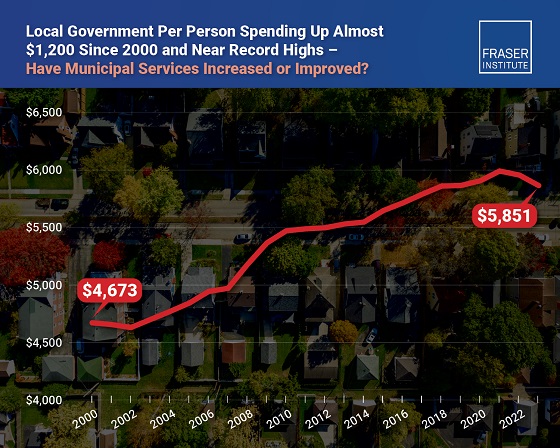Agriculture
Canada’s food supply chain is strong but will world-wide pressures effect It?

Within days of government’s shelter in place orders, there were ridiculous scenes of people fighting over toilet paper along with empty shelves in some other areas of grocery stores, including the fresh meat section. It was an eye-opener of what could come. With the food supply chains facing unprecedented pressures caused by Covid-19, governments have been assuring citizens that there are no food shortages and there is no need to hoard or panic buy.
After the weeks of the ongoing Covid-19 disaster there are cracks showing in the world’s ability to keep all of its citizens fed. Overseas there have already been scenes of hungry people looting food trucks. On April 28th, there were street riots in Lebanon over food price increases.

A food truck gets looted by desperate people near Cape Town, South Africa
A healthy food supply chain relies on predictability
In 2015 the Group of 20 (G20), held a conference to address “…food waste and loss – a major global problem…”. It was a much simpler time. The world-wide food supply chain did not have to deal with a very contagious and complicated coronavirus.
When working properly, a country’s food distribution is a marvel of efficiently and logistics. Delivering massive amounts of fresh food to consumers to every corner of the country, every day. But a chain is only as strong as its weakest link.
“It’s something we don’t like doing, no dairy farmer likes doing it. There are just some real limitations in our supply chain right now.” Karlee Conway with Alberta Milk
There are some scenarios happening in North America that have to be an eye-opener for everyone. Food rotting in the fields, whole crops getting ploughed under, fresh milk getting poured down the drain. The milk dumping is also happening in Canada. Karlee Conway with Alberta Milk said that many farmers are forced to make a difficult decision.
“It’s something we don’t like doing, no dairy farmer likes doing it. There are just some real limitations in our supply chain right now.”
And even more shocking, meat and egg producers in North America have already started culling their animals. A lack of buyers and the closing of processing plants due to sickness and even death of employees.
He and she nailed it
Agriculture Minister Devin Dreeshen said this on March 27:
“Alberta does not have a food supply shortage, but the entire national supply chain should be declared an essential service. There are a lot of moving parts to get food to market and onto kitchen tables. Alberta’s supply chain is responding well, but it is not business as usual.”
Many things have changed since then. Elaine Power, a food security expert at Queen’s University, is more blunt, saying the coronavirus pandemic is exposing “critical weaknesses” in various vital networks, including health care systems and food supply chains. “The people who are already food insecure, that’s only going to get worse. The type of resources that people would normally draw on probably aren’t going to be there.”

Beef ready for sale at a grocery store. Will prices go up? Will there be shortages?
Daily press briefing on April 21st
Prime Minister Justin Trudeau said in regard to the Cargill beef processing plant closing and another major Alberta plant’s production reduction after staff contracting Covid-19:
“We are not at this point anticipating shortages of beef, but prices might go up. We will of course be monitoring that very, very carefully.”
“We stress the importance of avoiding food losses”
On the same day the Prime Minister talked about the Alberta meat processing plants, the G20’s Agriculture and food ministers held an emergency meeting. The G20 makes up more than 80% of the world’s Gross Domestic Product (GDP). At this virtual meeting, the countries agreed to the following:
“Any emergency measures to contain the spread of the COVID-19 pandemic must not create unnecessary barriers to trade or disruption to global food supply chains.” And that, “Under the current challenging circumstances, we stress the importance of avoiding food losses and waste caused by disruptions throughout food supply chains, which could exacerbate food insecurity and nutrition risks and economic loss.”
Easy to say, much harder to do
Just in North America, if the past 5 weeks alone was a test on the G20’s agreed to statement, an “F” has been earned so far.
Our food system is distributed into two main streams; the large bulk volume packaging going to the food service areas and the smaller personal size portions going to consumer stores.
When the full stop happened, restaurants, hotels, schools and the majority of bulk orders stopped. Regular expedited weekly sales were sent to the grocery stores, leaving massive amount of unsold produce in the fields.

Gene McAvoy photo of a farmer plowing under rip tomato plant fields has upset viewers on Facebook.
Gene McAvoy, associate director of stakeholder relations at the University of Florida’s Institute of Food and Agricultural Sciences and president of the NACAA saw the orders stop.
“On March 24th, everything changed, from brokers the orders stopped, everything got quiet. The 25th, (was) super-quiet. Producers were blindsided. Since then tomato (sale) volumes are down 85%, green beans 50%, cabbage is (down about) 50%.”
And it is not just those crop. It’s onions, squash, lettuce and more.
Images of wasted produce and food lines
Without the regular food service industry orders, Florida farmer Paul Allen, in the just first week of April, plowed under more than six million pounds of green beans and cabbages back into his fields. He was far from the only farmer to do this. Allen explains,
“Four million people in the winter season eat lavishly three times a day on cruises from Miami alone. And 120 million tourists per year go to theme parks.”
His sales died up overnight.

Scene of milk dumping in the upstate. made New York Governor to say STOP!
This has lead to hundreds of millions of kilograms and billions of dollars’ worth of life sustaining, nutritious, fresh produce and milk has ended up as rotting waste and dumped down the drain. While, at the same time there were images of thousands of people line up for a food donation.
Countless food banks would gladly take and distribute this lost food. But the food supply system we know is one that is protected, regulated, and inspected. The last few weeks shows that in a world-wide emergency, the system has a few weak links.
On April 27th, after seeing images of milk waste, New York Governor Andrew Cuomo tweeted that he was stepping in to stop the milk dumping, asking that “…dairy producers use the excess milk to make yogurt and cheese that will be distributed to food banks & those in need.”

Helicopter footage from KENS 5 in San Antonio Texas, 10,000 family show up for food.
United Nations warns of famines of ‘biblical proportions’
It’s not just in North America. Problems are showing up around the world. In India, cows are being fed strawberries to get some use out of crops.
The United Nations Food and Agriculture Organization has reported the ‘Hammer Blow’ from the corona virus could by the end of 2020, double the amount of people facing actuate food insecurity to 265 million, up from 130 million in 2019. These numbers lead the UN to warn of the possibility of famines of ‘biblical proportions’ across as many as ‘three dozen countries’.
This kind of pending suffering will be hard to stop when the richest and most generous countries in the world are having their own food supply issues, while taking such a massive hit to their economies.
Spring is the start of Alberta’s growing season
In Alberta, the government has already made a plea for workers to fill as many of the 70,000 jobs in the food supply system. Jobs that are usually filled by temporary foreign workers, another program affected by the pandemic. With the planting season upon us, farmers are deciding how much and what to plant in 2020.
Meat production is a major part of Alberta’s economy
Meat production and processing in Alberta is vital to Canada’s supply of food. The three main beef plants in the province, Cargill in High River, JBS Canada in Brooks and Harmony Beef Company in Balzac, have all had Covid-19 problems. While a lot of the final meat processing can and is completed in production facilities and butcher shops across the country, these three main plants are responsible for 75-80% of the federally-inspected slaughter of the cattle for all of Canada.

Cargill’s High River plant
Meat processing employees work in close quarters, side-by-side on fast moving assembly lines. With this very contagious virus, it has spread through the workforce. At least 759 workers have tested positive for Covid-19 at the Cargill meat processing plant in High River, which has a workforce of 2,000. There are another 408+ people in the community that have tested positive for Covid-19, making this the largest outbreak linked to a single site in Canada. The Cargill plant is now temporarily closed.
At least 276 workers have also tested positive for Covid-19 at the JBS Food Canada beef processing plant in Brooks, with the community itself having over 760 cases. The plant is now down to one shift.
While Alberta and the Canadian governments work together to increase the number of meat inspectors available, Fabian Murphy, president of the Agriculture Union that represents the federal meat inspectors wants safety guarantees. Seven inspectors have already tested positive for the virus at the Cargill plant. Murphy has also stated that it’s only a matter of time before JBS plant in Brooks is also forced to temporarily halt production, stating that a, “14-day shutdown would allow all employees to self-isolate. After (that) production at the facility could resume.”
Pork producers are also under great pressures
The Canadian pork industry across western Canada is under extreme pressure, being called “the worst scenario seen in decades.” Faced with dropping prices for their finished hogs, no buyers for their piglets for finishing and growing backlogs in processing, the concern now is how many family pork farms will go under before this is over?
Production lines in Western Canada plants have been slowed down for better safety for workers. Add to that, US pork processing plants closing because of widespread Covid-19 outbreaks with their workers. Currently there has been a 25% reduction in pork slaughter capacity south of the border. Both the Canadian and the US pork industry producer have warned of large amounts of animals will have to be culled. And it has already started in small scales with larger culls within the next weeks.
Chicken producers are facing the same issues
Chicken producers are also facing the same issues. Sofina Foods Inc., that runs a Lilydale chicken processing plant in Calgary confirmed that one employee tested positive for COVID-19 and is in self-isolation. As well, doctors are investigating two possible cases of COVID-19 found in workers at Mountain View Poultry, near the Town of Okotoks.
British Columbia has at least two chicken processing plants with confirmed growing Covid-19 cases. One plant has temporary closed.
The talk of major animal culls, is not just talk
John Tyson, chairman of Tyson Foods, the world’s second largest processor and marketer of chicken, beef, and pork had very strong comments in a full-page ad published in The New York Times, Washington Post and Arkansas Democrat-Gazette. In part Tyson’s top person said bluntly:
“The food supply chain is breaking. Meat processing plants across the US are closing due to the pandemic. US farmers don’t have anywhere to sell their livestock. Millions of pigs, chickens and cattle will be euthanized because of slaughterhouse closures, limiting supplies at grocers.”
With published reports, the animal culling has already began. One Prince Edward Island farm euthanized market ready hogs and then dumped them in a landfill. Iowa farmer, Al Van Beek said, “What are we going to do?” after ordering 7,500 piglets to be aborted. Daybreak Foods Inc., based in Lake Mills, Wisconsin has used carts and tanks of carbon dioxide to euthanize tens of thousands of healthy egg-laying hens. Eggs are no longer being bought by their customers in the restaurants and food-service business.
USDA sets up “Coordination Centre” to “assist on depopulation”
The U.S. Department of Agriculture (USDA) has posted online:
“The USDA’s Animal and Plant Health Inspection Service (APHIS) is establishing a National Incident Coordination Center to provide direct support to producers whose animals cannot move to market as a result of processing plant closures due to COVID-19. Going forward, APHIS Coordination Center, State Veterinarians, and other state officials will be assisting to help identify potential alternative markets if a producer is unable to move animals, and if necessary, advise and assist on depopulation and disposal methods.”
“We stress the importance of avoiding food losses and waste caused by disruptions throughout food supply chains, which could exacerbate food insecurity and nutrition risks and economic loss.” April 21st G20 agreement.
If the G20 matters, North America, gets an “F” so far
The stress on the food supply chain continues to grow the longer Covid-19 lasts. On April 28th Meat producer JBS said it was reopening a Minnesota pork plant, that was shuttered by the pandemic to euthanize up to 13,000 pigs a day for farmers, not to produce meat for consumers.
Governments must get a handle on the cull of livestock and the billions of dollars of rotting produce meant to go to our populations. There are thousands of people that are hungry. The use of Food Banks in North America has hit new records, with more people needing help every day. But at the same time billions of dollars of food is being destroyed.
What’s wrong with the picture? It is just wrong; the USDA has set-up a Coordination Center to help farmer either sell their products or help kill and dispose of the carcasses in mass. All this, while people go hungry in the same country during a pandemic.
Governments need to step in and redirect this food from a landfill to population that needs it. Until this happens, the links in our food supply chain will continue to be stressed. Food for thought.

A farm tractor is silhouetted against a setting sun near Mossbank, Saskatchewan, Saturday May 11, 2002. (THE CANADIAN PRESS / Adrian Wyld)
PANDAMNIT! Alberta cancels festivals & gatherings over 15 people till September
Agriculture
Unstung Heroes: Canada’s Honey Bees are not Disappearing – They’re Thriving
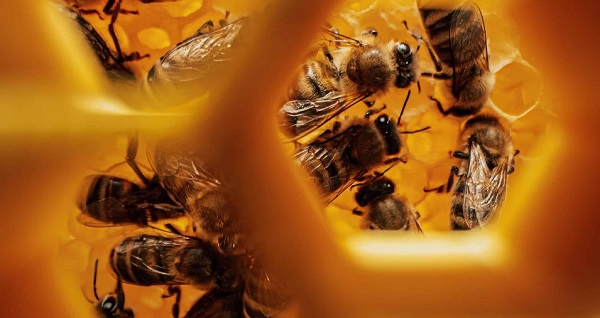
Canada’s Bee Apocalypse began in 2008. That was the year the Canadian Association of Professional Apiculturists (CAPA) first reported unusually high rates of winter bee colony losses. At 35 percent, the winter die-off that year was more than twice the normal 15 percent rate of attrition.
“Successive annual losses at [these] levels … are unsustainable by Canadian beekeepers,” the CAPA warned. This set off an avalanche of dire media reports that now appear on a regular basis. Among the many examples over the years: Huge Honey Bee Losses Across Canada” and “Canada’s bee colonies see worst loss in 20 years”. As each of these stories reminds readers, the disappearance of honey bees will doom our food supply, given their crucial role in pollinating crops including canola, soyabeans, apples, tomatoes and berries.
This year the black-and-yellow striped Cassandras are back at work, with headlines shouting “Scientists warn of severe honeybee losses in 2025” and “The Bees are Disappearing Again”. If it’s spring, the bees must be disappearing. Again.
It is, however, mathematically impossible for any species to be in an allegedly continuous and calamitous state of decline over nearly two decades and never actually reduce in number. For despite the steady supply of grave warnings regarding their imminent collapse, Canada’s bees are actually buzzing with life.
In 2007, according to Statistics Canada, there were 589,000 honey bee colonies in Canada,; in 2024, they reached 829,000, just shy of 2021’s all-time high of 834,000. Figuring a conservative summertime average of 50,000 bees per colony, that means there are approximately 12 billion more honey bees in Canada today than when the Bee Apocalypse first hit.
As for beekeepers, their numbers have also been growing steadily, and now stand at 15,430 – the most recorded since 1988. As CAPA’s report acknowledges, “the Canadian beekeeping industry has been resilient and able to grow, as proven by the overall increase in the number of bee colonies since 2007 despite the difficulties faced every winter.”
How is this possible? As is usually the case where there’s a need to be filled, the market holds the answer.
It is true that Canadian honey bees face a long list of threats and challenges ranging from mites and viruses to Canada’s harsh winters. It is also true that they perform a crucial service in pollinating crops, the value of which is estimated at $7 billion annually. However, this underscores the fact that bees are a livestock bred for a particular agricultural purpose, no different from cattle, chickens or pen-raised salmon. They are a business.
And in spite of its alleged status as an environmental totem, the honey bee isn’t even native to North America. It was first imported by European settlers for its honey-making abilities in the 1600s. Since then, it has been cultivated with deliberate commercial intent – allowing it to outcompete native pollinators such as bumble bees and butterflies even though it is poorly suited to the local winter. (This highlights the irony of all those native-plant pollinator gardens virtuously installed in neighbourhoods across Canada that end up supporting an invasive honey bee population.)
The significance of the bee economy means that when a beehive collapses over the winter for whatever reason, beekeepers have plenty of motivation to regenerate that colony as swiftly as possible. While hives can create their own queens over time, this can be a slow process given the cold Canadian climate. The better option is to simply buy a new queen from a warmer country.
In 2024, Canada imported 300,000 queens worth $12 million, mostly from the U.S., Italy, Australia and Chile. That works out to $40 each. In a miracle of nature, each of these new queens can lay up to 2,500 eggs a day, and each egg takes just two to three weeks to reach full maturity as a worker or drone. It is also possible to import entire “bee packages” that include a queen and 8,000 to 10,000 bees.
As a result, even a devastating 50 percent winter loss rate, something that has occurred only rarely in Canada in individual provinces and never nationally, isn’t necessarily fatal to any beekeeping operation. The beekeeper can purchase imported queens in April, split their existing colonies and be back in business by May or June.
And regardless of the honey bee’s apparent difficulties with Canada’s unforgiving weather (efforts are ongoing to breed a hardier Canadian variant), there’s no shortage of bees worldwide. Earlier this year, the German statistical agency reported the global beehive count rose from 69 million in 1990 to 102 million in 2023. Another study looking back to 1961 by New Zealand researchers found the number of honey bee colonies has “nearly doubled” over this time, while honey production has “almost tripled.” As the New Zealand report observes, “Headlines of honey bee colony losses have given an
impression of large-scale global decline of the bee population that endangers beekeeping, and that the world is on the verge of mass starvation.” Such claims, the authors note, are “somewhat inaccurate.” In truth, things have never been better for bees around the world.
Here in Canada, the ability to import queens from other countries, together with their prodigious reproductive capabilities, backstops the amazing resiliency of the bee industry. Yes, bees die. Sometimes in large numbers. But – and this is the bit the headlines always ignore – they come back. Because the market needs them to come back.
If there is a real threat to Canada’s bee population, it’s not environmental. It’s the risk that unencumbered trade in bees might somehow be disrupted by tariffs or similar bone-headed human interventions. Left on their own, bees have no problem keeping busy.
The longer, original version of this story first appeared at C2CJournal.ca
Agriculture
Canada Greenlights Mass Culling of 400 Research Ostriches Despite Full Recovery from Bird Flu Months Ago
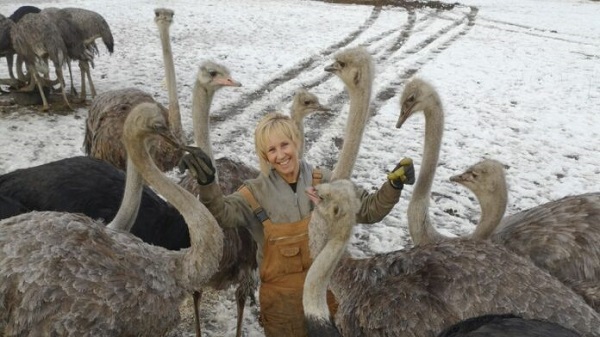
 Nicolas Hulscher, MPH
Nicolas Hulscher, MPH
Federal court upholds CFIA’s reckless cull order—setting a dangerous precedent for the unscientific mass depopulation of genetically important animals.
In March, I interviewed Katie Pasitney of Universal Ostrich and Connie Shields to discuss the alarming implications of the Canadian Food Inspection Agency (CFIA) order to cull 400 research ostriches at Universal Ostrich Farm in British Columbia over bird flu:
Canada Orders Mass Culling of 400 Research Ostriches Over Bird Flu, Refuses to Test Surviving Birds for Natural Immunity
·The Canadian Food Inspection Agency (CFIA) has ordered the culling of 400 ostriches at Universal Ostrich Farm in British Columbia, citing concerns over H5N1 bird flu. However, this decision is not based on sound science and could have serious consequences for both food security and medical research.
Universal Ostrich Farm is a research facility focused on studying the unique antibody-producing capabilities of ostriches. Their research has demonstrated potential in neutralizing viruses, bacteria, and even COVID-19, making it an important contribution to medical science.
In December 2024, the CFIA claimed that two deceased ostriches—which had been lying outside for over 16 hours—tested positive for H5N1 via PCR testing. Just 41 minutes after receiving these results, the CFIA signed an order to cull the entire flock.
The CFIA initially granted the farm an exemption, recognizing the birds as “genetically important.” Later, without clear justification, they reversed this decision, ordering their destruction.
Despite the importance of this research, the CFIA has refused to conduct further testing on the birds and has banned the farm from conducting its own tests, under threat of heavy fines and possible imprisonment. Why is the Canadian government refusing to study the potential antibodies ostriches have developed against H5N1 bird flu?
On January 31, 2025, a court granted a temporary stay of execution, halting the cull. However, the CFIA is appealing this decision, which means the culling could still proceed.
Today, we have received news that the reckless mass cull order will proceed despite their ostriches having already recovered months ago and developed natural immunity against H5N1:

Official Announcement: Federal Court Decision in Universal Ostrich Farms Inc. v. Canadian Food Inspection Agency
Dear friends and supporters,
We are absolutely devastated to share today’s Federal Court decision, issued on May 13, 2025. The court ruled in favour of the Canadian Food Inspection Agency (CFIA), upholding their order to destroy our beloved ostriches and rejecting our plea to save them.
The court’s decision accepted the CFIA’s justification under the Health of Animals Act and their use of the Stamping-Out Policy, which mandates the destruction of animals to control disease outbreaks, regardless of their health status. The court confirmed the CFIA’s approach, prioritizing trade obligations over the welfare of our animals.
In addition, we’ve been ordered to pay $15,000 in CFIA’s legal costs. You can read the full decision here: (2025 FC 878). https://saveourostriches.com/wp-content/uploads/2025/05/JR-T-294-25-and-T-432-25-Final.pdf
We are heartbroken by this outcome and uncertain about the future of our farm. As we navigate this incredibly difficult time, we ask for your patience and continued support. If you are able, please consider making a donation to help us manage the financial and emotional toll this has taken.
Thank you,
Universal Ostrich Farm
http://SaveOurOstriches.com
This deeply misguided decision sets a dangerous precedent for the Canadian government to recklessly depopulate animals at will.
By upholding the CFIA’s reckless cull order, despite the ostriches’ recovery and natural immunity, the court has prioritized trade protocols over scientific inquiry, animal welfare, and the advancement of life-saving medical research.
Epidemiologist and Foundation Administrator, McCullough Foundation
www.mcculloughfnd.org
Please consider following both the McCullough Foundation and my personal account on X (formerly Twitter) for further content.
-

 Crime2 days ago
Crime2 days agoNational Health Care Fraud Takedown Results in 324 Defendants Charged in Connection with Over $14.6 Billion in Alleged Fraud
-

 Health2 days ago
Health2 days agoRFK Jr. Unloads Disturbing Vaccine Secrets on Tucker—And Surprises Everyone on Trump
-

 Business1 day ago
Business1 day agoElon Musk slams Trump’s ‘Big Beautiful Bill,’ calls for new political party
-

 Business12 hours ago
Business12 hours agoWhy it’s time to repeal the oil tanker ban on B.C.’s north coast
-

 Censorship Industrial Complex1 day ago
Censorship Industrial Complex1 day agoGlobal media alliance colluded with foreign nations to crush free speech in America: House report
-

 International20 hours ago
International20 hours agoCBS settles with Trump over doctored 60 Minutes Harris interview
-
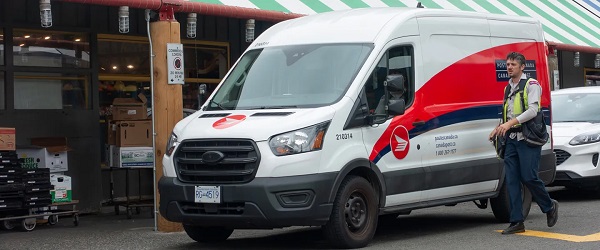
 Business13 hours ago
Business13 hours agoLatest shakedown attempt by Canada Post underscores need for privatization
-
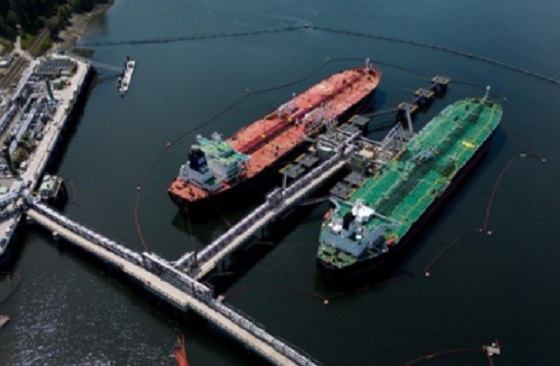
 Energy12 hours ago
Energy12 hours agoIf Canada Wants to be the World’s Energy Partner, We Need to Act Like It




